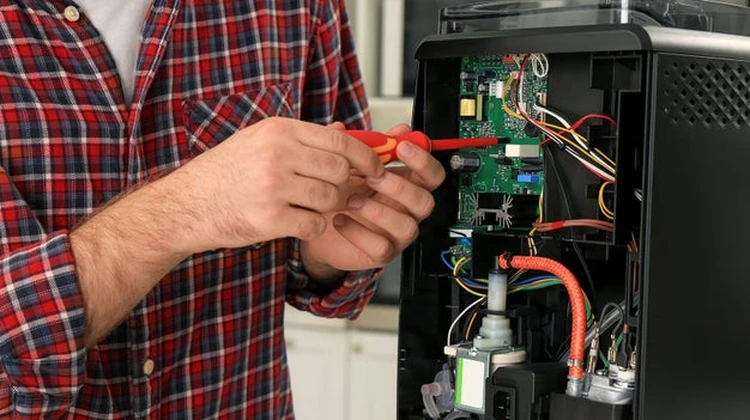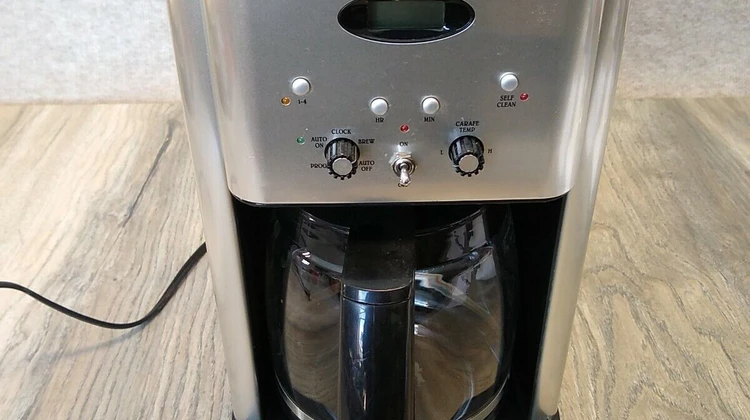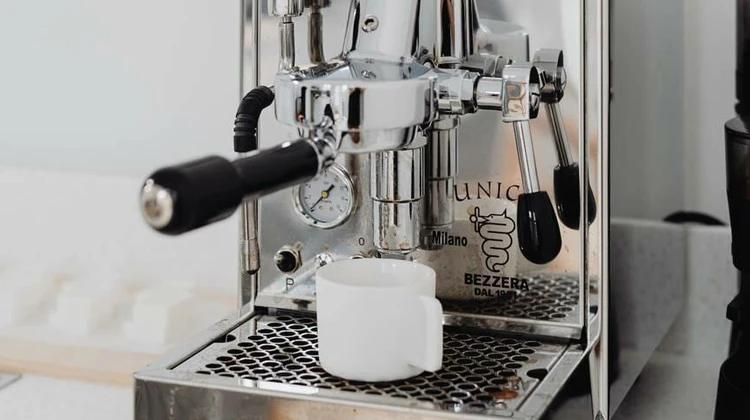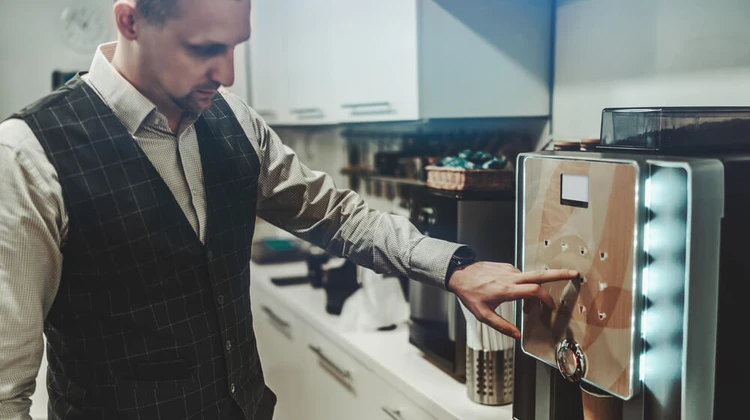Did you know that your coffee maker could be harboring more bacteria than your toilet seat? According to a study by the National Sanitation Foundation (NSF), coffee reservoirs are among the top germ hotspots in the home. Maintaining a clean coffee maker is not just about keeping your morning brew tasting fresh; it’s also crucial for your health. Whether you’re a homeowner, renter, or kitchen enthusiast, understanding what to use to clean a coffee maker is essential for optimal performance and hygiene.
Disclaimer: As an Amazon Associate, I earn commission from qualifying purchases.
With over a decade of experience in kitchen appliance maintenance and hands-on expertise, I’ve seen firsthand the impact of regular cleaning on the lifespan and efficiency of coffee makers. This guide will walk you through the essentials of cleaning your coffee maker, backed by reputable sources like Consumer Reports and Good Housekeeping. Always remember to consult your appliance manual for specific instructions and avoid using harsh chemicals without proper guidance.
Why Cleaning Your Coffee Maker is Essential
Cleaning your coffee maker is more than just a chore; it’s a necessity. Mineral deposits and old coffee oils can build up over time, affecting both the taste and performance of your coffee maker. These residues can lead to a bitter taste and reduced efficiency, causing your machine to work harder and potentially shortening its lifespan.
The health implications are equally concerning. A dirty coffee maker can become a breeding ground for bacteria and mold, posing serious health risks. According to the NSF, coffee reservoirs can harbor coliform bacteria and yeast, which can lead to illnesses if not properly cleaned. Regular cleaning is essential to maintain a hygienic environment and ensure your coffee is safe to drink.
While the frequency of cleaning can vary depending on usage, a balanced approach is recommended. For heavy users, a monthly deep clean is advisable, while occasional users might get away with cleaning every few months. However, always be on the lookout for signs of build-up or a change in taste, which can indicate it’s time for a clean.
What Do You Use to Clean a Coffee Maker: The Basics
When it comes to cleaning your coffee maker, several effective agents can be used. The most common include vinegar, baking soda, lemon juice, and commercial cleaners. Each has its pros and cons:
- Vinegar: An acidic agent that effectively removes mineral deposits but can leave a strong smell if not rinsed properly.
- Baking Soda: An alkaline cleaner that can neutralize odors and break down grease but requires thorough rinsing to avoid altering the taste of coffee.
- Lemon Juice: A natural alternative with citric acid that can cut through grime but may also affect the taste if not rinsed well.
- Commercial Cleaners: Specially formulated to clean coffee makers but can be costly and may contain harsh chemicals.
Using Vinegar to Clean Your Coffee Maker
Vinegar is a popular choice for cleaning coffee makers due to its acidic properties, which are effective in dissolving mineral deposits. Here’s a step-by-step guide to cleaning your coffee maker with vinegar:
- Mix equal parts of white vinegar and water. For a standard 12-cup coffee maker, use 6 cups of each.
- Pour the mixture into the water reservoir.
- Place a filter in the basket (you can use a paper filter or the permanent filter if your machine has one).
- Run a brew cycle as if you were making coffee. Once the cycle is complete, let the vinegar solution sit in the carafe for about 15-30 minutes.
- After soaking, run another brew cycle with just water to rinse out the vinegar. Repeat this process 2-3 times to ensure all vinegar is removed.
While vinegar is effective, it can leave a strong smell. To mitigate this, consider running an additional cycle with just water and a few drops of lemon juice to neutralize the odor.
Cleaning with Baking Soda
Baking soda is another effective cleaning agent, especially for deep cleaning. Its alkaline nature helps neutralize odors and break down grease. Here’s how to use it:
- Mix 1/4 cup of baking soda with 1 quart (4 cups) of warm water.
- Pour the mixture into the water reservoir.
- Run a brew cycle. After the cycle is complete, let the solution sit in the carafe for about 15-30 minutes.
- Run another brew cycle with just water to rinse out the baking soda. Repeat this process 2-3 times to ensure all residue is removed.
It’s crucial to rinse thoroughly to avoid any residual baking soda, which can alter the taste of your coffee.
Lemon Juice: A Natural Alternative
Lemon juice is a natural and eco-friendly option for cleaning your coffee maker. The citric acid in lemon juice can effectively cut through grime and mineral deposits. Here’s how to use it:
- Mix equal parts of lemon juice and water. For a standard 12-cup coffee maker, use 6 cups of each.
- Pour the mixture into the water reservoir.
- Run a brew cycle. Once the cycle is complete, let the lemon juice solution sit in the carafe for about 15-30 minutes.
- Run another brew cycle with just water to rinse out the lemon juice. Repeat this process 2-3 times to ensure all residue is removed.
While lemon juice is a great natural cleaner, ensure thorough rinsing to avoid any lingering citrus taste in your coffee.
Commercial Coffee Maker Cleaners: Pros and Cons
Commercial cleaners are specifically formulated to clean coffee makers and can be very effective. However, they come with their own set of pros and cons:
- Pros: Effective at removing mineral deposits and coffee oils, often come with specific instructions for different types of coffee makers.
- Cons: Can be costly, may contain harsh chemicals, and require careful handling and storage.
Some popular commercial cleaners include:
- Urnex Cleancaf Coffee and Espresso Machine Cleaning Powder: Highly effective but can be pricey.
- Durgol Swiss Espresso: Known for its thorough cleaning but may require multiple rinses.
- Eco-Coffee Equipment Cleaner: A more eco-friendly option but may not be as widely available.
Always follow the instructions on the product label and consider the cost and environmental impact when choosing a commercial cleaner.
Cleaning Different Types of Coffee Makers
Drip Coffee Makers
Drip coffee makers are the most common type and relatively straightforward to clean. Follow these steps:
- Remove the filter basket and carafe.
- Wash these parts with warm, soapy water.
- Use vinegar, baking soda, or lemon juice to clean the water reservoir and internal components as described earlier.
- Run several cycles with just water to rinse thoroughly.
Espresso Machines
Espresso machines require more detailed cleaning due to their complexity. Here’s a step-by-step guide:
- Remove the portafilter and clean it with a dedicated espresso machine cleaner or vinegar solution.
- Backflush the machine by placing the blind filter (a filter without holes) in the portafilter and running the cleaning solution through it.
- Clean the steam wand by purging it with the cleaning solution.
- Run several cycles with just water to rinse thoroughly.
Single-Serve Coffee Makers
Single-serve coffee makers, like Keurig, have unique considerations. Follow these steps:
- Remove the water reservoir and clean it with a vinegar solution.
- Run a cleaning cycle using vinegar or a commercial descaling solution.
- Run several cycles with just water to rinse thoroughly.
- Clean the needle and exit needle with a straightened paper clip to remove any coffee grounds or residue.
How Often Should You Clean Your Coffee Maker?
The frequency of cleaning depends on how often you use your coffee maker. As a general guideline:
- Daily users should aim for a monthly deep clean.
- Occasional users can clean every 2-3 months.
Signs that indicate it’s time for a clean include a change in taste, slower brewing times, or visible build-up in the water reservoir.
Best Practices for Maintaining a Clean Coffee Maker
Maintaining a clean coffee maker involves daily upkeep and regular deep cleaning. Here are some tips:
- Rinse the carafe after each use to remove any coffee residue.
- Use filtered water to reduce mineral build-up.
- Clean the filter basket regularly to prevent clogging.
- Store your coffee maker with the lid open to allow it to dry completely, preventing mold growth.
Eco-Friendly Cleaning Solutions
Choosing eco-friendly cleaning solutions can reduce your environmental impact. Natural cleaners like vinegar and lemon juice are biodegradable and less harmful to the environment. Additionally, using reusable filters and avoiding single-use plastics can help reduce waste.
Consider the environmental impact of commercial cleaners and opt for products with eco-friendly certifications when possible.
Frequently Asked Questions (FAQs)
How do you clean a coffee maker with vinegar and baking soda?
To clean a coffee maker with vinegar and baking soda, start by running a cycle with a vinegar solution (equal parts vinegar and water). After rinsing, run another cycle with a baking soda solution (1/4 cup baking soda mixed with 1 quart of water). This combined method can effectively remove mineral deposits and neutralize odors.
Can you clean a coffee maker without vinegar?
Yes, you can clean a coffee maker without vinegar by using lemon juice or commercial cleaners. Lemon juice is a natural alternative with citric acid that can cut through grime. Commercial cleaners are specifically formulated for coffee makers and can be very effective but may contain harsh chemicals.
How do you clean a coffee maker with lemon juice?
To clean a coffee maker with lemon juice, mix equal parts of lemon juice and water. Pour the mixture into the water reservoir and run a brew cycle. Let the solution sit in the carafe for about 15-30 minutes, then run another cycle with just water to rinse out the lemon juice. Repeat this process 2-3 times to ensure all residue is removed.
What is the best commercial coffee maker cleaner?
The best commercial coffee maker cleaner depends on your specific needs and the type of coffee maker you have. Urnex Cleancaf Coffee and Espresso Machine Cleaning Powder is highly effective but can be pricey. Durgol Swiss Espresso is known for its thorough cleaning but may require multiple rinses. Eco-Coffee Equipment Cleaner is a more eco-friendly option but may not be as widely available.
How do you clean a coffee maker to remove mold?
To remove mold from a coffee maker, start by running a cycle with a vinegar solution (equal parts vinegar and water). Let the solution sit in the carafe for about 30 minutes to allow the vinegar to kill the mold. Run another cycle with just water to rinse out the vinegar. Repeat this process 2-3 times to ensure all mold is removed. Regularly cleaning and allowing the coffee maker to dry completely can prevent future mold growth.
Can you use hydrogen peroxide to clean a coffee maker?
Hydrogen peroxide can be used to clean a coffee maker, but it should be done with caution. Mix 1 part hydrogen peroxide with 2 parts water and run a cycle through the coffee maker. Let the solution sit for about 15-30 minutes, then run several cycles with just water to rinse thoroughly. Hydrogen peroxide can be effective at killing bacteria and mold but may leave a residual taste if not rinsed properly.
Conclusion
Cleaning your coffee maker is essential for maintaining optimal performance and ensuring your morning brew is both delicious and safe. Regular cleaning with vinegar, baking soda, lemon juice, or commercial cleaners can help remove mineral deposits, old coffee oils, and bacteria.
Always consult your appliance manual for specific instructions and consider the environmental impact of your cleaning methods. Implementing these tips and techniques will not only extend the lifespan of your coffee maker but also ensure a healthier and more enjoyable coffee experience.







